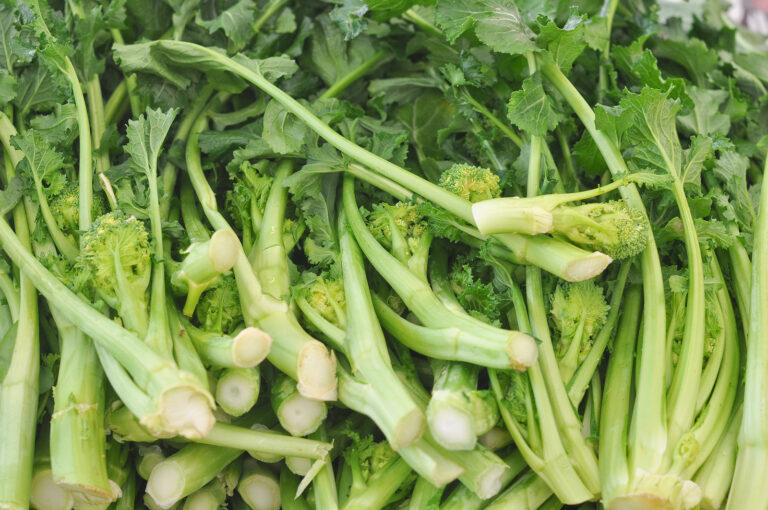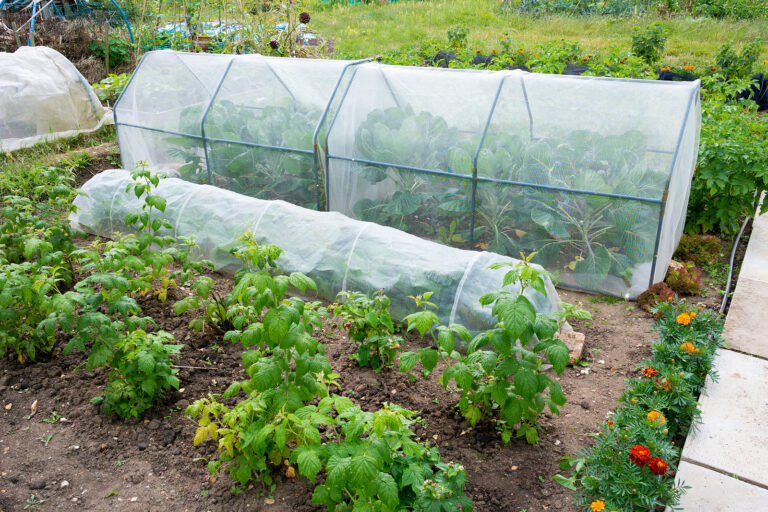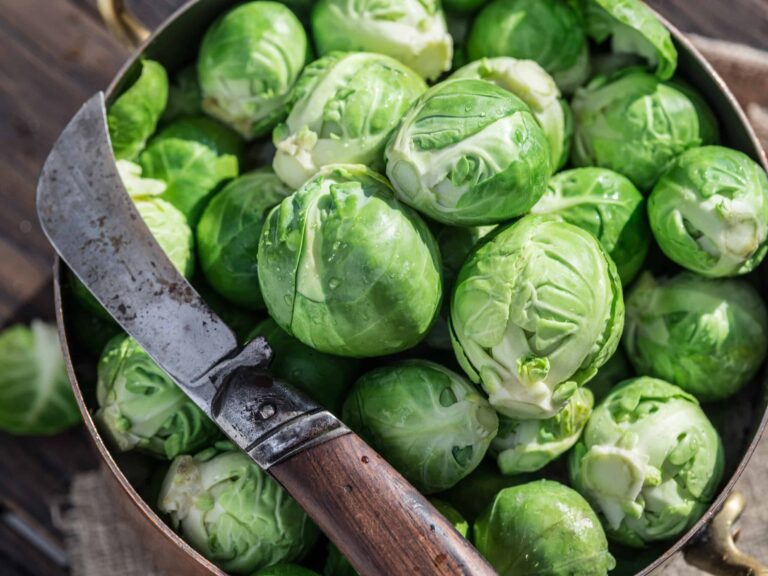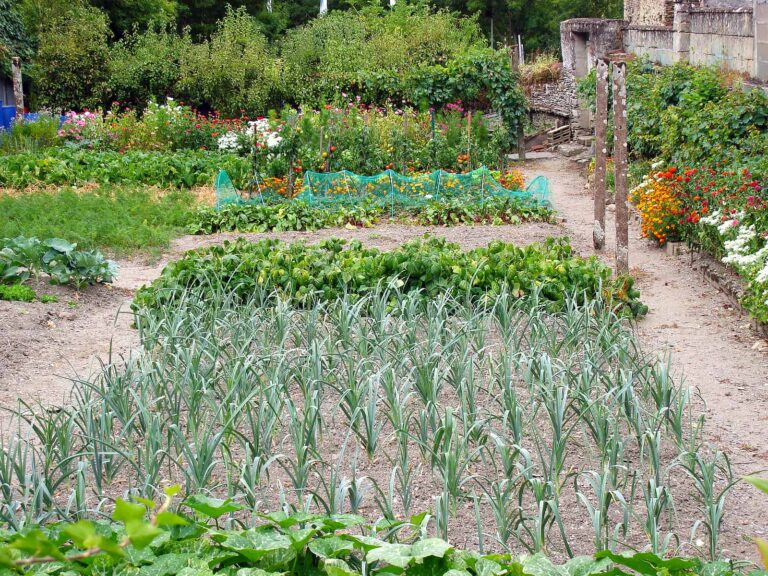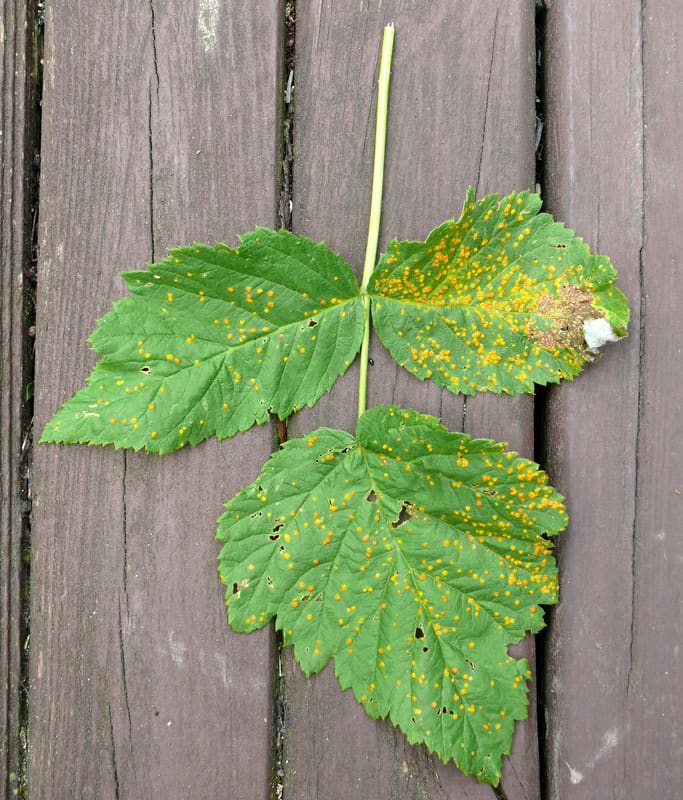Common Brussels Sprouts Pests and Diseases and How to Control Them Naturally
Brussels sprouts are a fall vegetable; there is not enough cool spring weather in most regions to bring sprouts to harvest before summer. Brussels sprouts require about 3 months to reach harvest size.
Sprouts–buds or heads that resemble miniature cabbage–form in the axils of leaves. Sprouts appear first at the bottom of the stalk and must be picked as they mature. Remove leaves as buds are picked to make the harvest easier; the top leaves are never disturbed.
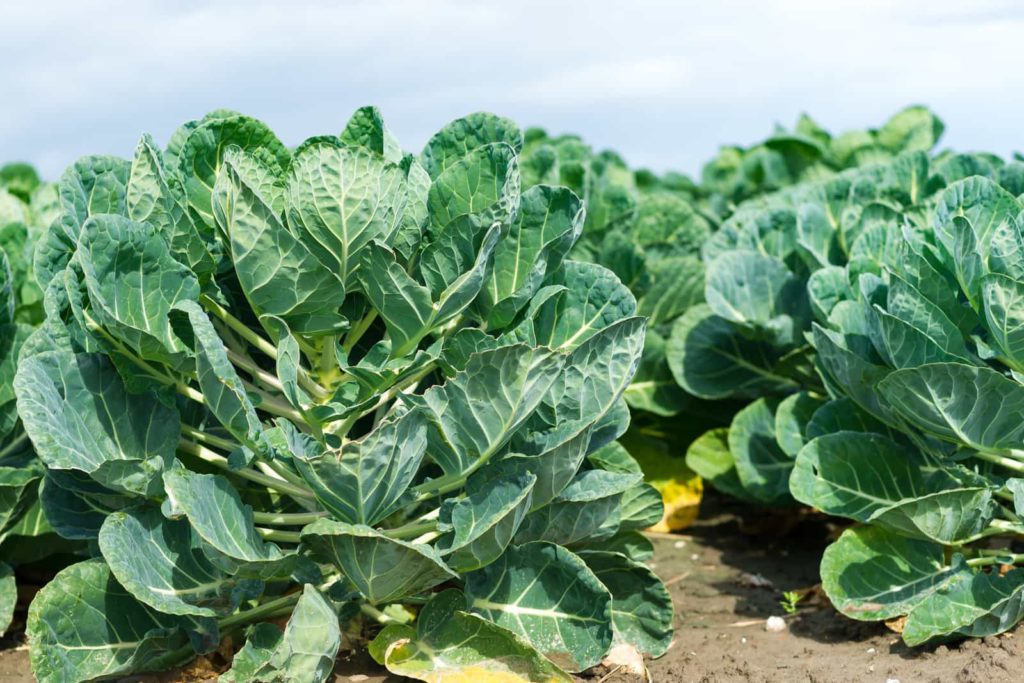
Brussels sprouts can easily bear light frosts and they can even take freezing weather if the thaw afterward is gradual. But it is best to complete the sprout harvest soon after the first frost.
For Brussels sprouts growing tips see Brussels Sprouts Growing Success Tips at the bottom of this post.
Here are common Brussels sprouts growing problems with cures and controls:
Seed and seedling problems
Seedlings fail to emerge from soil; seedlings are eaten; roots are tunneled
A cabbage maggot is a small gray-white, legless worm to ⅓-inch long; an adult is the cabbage root fly, which looks like a housefly. Flies lay eggs in the soil near the seedling or plant. Maggots will tunnel into roots leaving brown scars; some plants may be honeycombed with slimy tunnels. Exclude flies with floating row covers. Remove and dispose of damaged plants. Apply lime or wood ashes around the base of plants; time planting to avoid insect growth cycle. Plant a bit later when the weather is drier. Companion plant with mint.
Seeds rot or seedlings collapse with dark water-soaked stems as soon as they appear
Damping off is a fungus that lives in the soil, particularly where humidity is high. Do not plant in cold, moist soil. Make sure the soil is well drained.
Seedlings are eaten or cut off near the soil level
Cutworms are gray grubs ½- to ¾-inch long that can be found curled under the soil. They chew stems, roots, and leaves. Place a 3-inch paper collar around the stem of the plant. Keep the garden free of weeds; sprinkle wood ash around the base of plants.
Young seedlings fail to grow or die back; bluish-black spot on leaves and stems
Blackleg is a fungal disease that leaves sprouts girdled and rotting at soil level–“blacklegs.” Blackleg is spread by cutworms and cabbage maggots. Remove and destroy infected plants; keep the garden free of plant debris. Add organic matter to the planting bed; make sure the soil is well-drained. Rotate crops.
Young plants flower before they grow much
Cold will cause young plants to flower and produce seeds without forming a head. Protect young plants from cold weather with floating row covers; set transplants into the garden no sooner than 1 to 3 weeks before the last average frost date in spring.
Tiny shot holes in the leaves of seedlings
Flea beetles are tiny bronze or black beetles a sixteenth of an inch long. They eat small holes in the leaves of seedlings and small transplants. The larvae feed on the roots of germinating plants. Spread diatomaceous earth around seedlings. Handpick off plants, Cultivate them often to disrupt the life cycle. Keep the garden clean. Spade garden soil deeply to destroy larvae in early spring. Treat plants with Sevin, pyrethrum, or rotenone.
Leaf problems
Irregular yellowish to brownish spots on upper leaf surfaces; grayish powder or mold on undersides
Downy mildew is caused by a fungus. Improve air circulation. Plant disease-resistant varieties. Rotate crops. Keep the garden free of plant debris.
Leaves become dull yellow, curl, and plants may die
Cabbage yellows are caused by the Fusarium soil fungus that infects plants usually where the soil is warm. The disease is spread by leafhoppers. Remove infected plants. Control leafhopper. Keep the garden free of weeds which can harbor disease. Keep soil evenly moist, but not wet. Rotate crops.
Leaves yellow; plant stunted; small glistening white specks on roots
A root cyst nematode is a microscopic worm-like animal that lives in the film of water that coats soil particles. Rotate cabbage family crops. Solarize the soil with clear plastic in mid-summer.
Leaves are yellowish and slightly curled with small shiny specks
Aphids are tiny, oval, whitish-green, pink, or black pear-shaped insects that colonize on leaves. They leave behind sticky excrement called honeydew which can turn into a black sooty mold. Remove with a blast of water. Use insecticidal soap solution. Mulch with aluminum foil to disorient aphids.
Leaves have whitish or yellowish spots; leaves are deformed; plant wilts
Harlequin bugs or stink bugs. Harlequin bugs are black with bright red yellow or orange markings. They suck fluids from plant tissue causing white and yellow blotches. Handpick and destroy bugs and egg masses. Keep the garden free of crop residue and weeds where bugs breed. Spray plants with Sevin, pyrethrum, and rotenone. Stink bugs are gray or green shield-shaped bugs about ¼-inch long; they feed on fruits. Remove garden debris and weeds where bugs can overwinter. Hand-pick egg masses and bugs and destroy them.
Leaves partially eaten; leaves webbed together; eggs in rows on undersides of leaves
Cabbage webworms are green with a light stripe to ¾ inches long; the webworm is the larvae of a brownish-yellow moth with gray markings. Larvae spin light webs. Clip off and destroy webbed leaves. Destroy caterpillars. Keep garden weed free.
Leaves are eaten and plants are partially defoliated
Blister beetles are slender gray or metallic black beetles to ¾-inch long; they may have striped spots on their wings. Handpick beetles and destroy them. Keep the garden weeds and debris. Cultivate in spring to kill larvae and interrupt the life cycle. Spray or dust with Sevin or use a pyrethrum or rotenone spray.
Small holes in leaves; loose cocoons about ⅓-inch long on leaves
The pale green caterpillar is the larvae of the gray diamondback moth. Moth has yellow diamondback shapes on folded wings. Keep the garden free of weeds, particularly mustard plants. Handpick and destroy caterpillars. Spray with Bacillus thuringiensis is very effective.
Large holes in leaves; leaves skeletonized
Cabbage loopers or armyworms. (1) Cabbage looper is a light green caterpillar with yellow stripes running down the back; it loops as it walks. Keep the garden clean of debris where adult brownish night-flying moths can lay eggs. Cover plants with spun polyester to exclude moths. Pick loppers off by hand. Use Bacillus thuringiensis. Dust with Sevin or rotenone. (2) Armyworms are dark green caterpillars the larvae of a mottled gray moth with a wingspan of 1½ inches. Armyworms mass and eat leaves stems, and roots of many crops. Armyworms will live inside webs on leaves. Handpick caterpillars and destroy them. Cultivate after harvest to expose the pupae. Use commercial traps with floral lures.
Leaves are chewed and slimed
Snails and slugs eat leaves. Collect these pests at night. Set beer traps at soil level to attract and drown snails and slugs.
Leaves chewed; tunnels inside buds
Imported cabbage worm is a pale green caterpillar with yellow stripes to about 1¼ inches long; the adult is a white moth with two or three black spots on the forewing. Use Bacillus thuringiensis. Destroy all remains and weeds after harvest. Companion plant with mint. Encourage the predatory Trichogramma wasp.
Browning along margins of old leaves; water spots at the core of plant; leaves are bitter and tough.
Boron deficiency is often found in alkaline soils. Test soil. If deficient, add 2 ounces of borax per 30 square yards. Plant disease-resistant varieties: Plant Wisconsin Ballhead, Wisconsin Hollander No. 8.
Leaves and head become pale green; leaves wilt; slimy rot develops in stem, leaves, and head
Bacterial soft rot is caused by Erwinia bacteria. Water-soaked spots appear on leaves and roots; spots enlarge and turn dark and mushy. Black ooze develops in cracks in roots and stems. Rot can not be cured. Collect and burn infected plants Promote good drainage by adding aged compost and organic materials to planting beds. Avoid overhead watering. Rotate crops.
Leaves are pitted
Blowing soil particles can pit leaves and cause wart-like projections the size of a pinhead. Protect plants from blowing soil and sand with floating row covers or use windbreaks in large gardens.
Leaf margins turn brown
Tipburn is caused when leaves do not take up enough water. This can happen if there is a calcium deficiency in the soil. Test soil. Maintain consistent and even soil moisture. Mulch and cultivate only shallowly during drought. The soil pH should be between 6.0 and 7.0, add limestone which contains calcium if the pH is below 6.0.
Whole plant problems
The main stem becomes dark and wiry
Wirestem is caused by the Rhizoctonia fungus which also caused damping off. Infected plants will not produce strong heads. Do not plant in cold, moist soil. Make sure the soil is well drained.
Plant wilts; roots are swollen and misshapen, and roots rot
Clubroot is a soilborne fungal disease. Fungus interferes with water and nutrient uptake of roots. Keep the garden clean of plant debris and weeds that can harbor the fungus. Remove and destroy infected plants including soil around roots. Clubroot is found in acid soils; add lime if the soil pH is below 7.2. Rotate crops for at least 2 years. Purchase transplants from disease-free suppliers.
Plant stunted; worms tunnel into roots
Plump grayish grub with a brown head is the larva of the June beetle, a reddish brown or black hard-shelled beetle to 1 inch long. Wireworms are the soil-dwelling larvae of click beetles; they look like wiry-jointed worms. Check the soil before planting; hand pick and destroy pests; flood the soil if wireworms are present. Remove infested plants and surrounding soil. Keep the garden free of refuse that could shelter beetle eggs.
Sprouts are large, loose, and leafy
Temperatures are too warm; Brussels sprouts need temperatures of below 75°F to produce compact sprouts. Plant so that the crop matures in the cool temperatures of autumn.
Brussels sprouts growing success tips
Planting
Brussels sprouts grow best in full sun where temperatures do not exceed 80°F. Where temperatures are warmer, grow Brussels sprouts in partial shade. Plant Brussels sprouts in well-drained soil rich in organic matter. Add aged compost to the planting bed before planting. Brussels sprouts can be sown directly in the garden, but for best results, you may want to start them indoors.
Planting time
Plant Brussels sprouts so that they come to harvest in the cool of autumn; there is not enough cool weather to bring Brussels sprouts to harvest in spring in most regions. For the best planting date, count back from the average first frost date in autumn to the number of days required to reach maturity for the variety you are growing; plant on that date. If you are growing from seed, be sure to include the 30 to 40 days that it will take for plants to get to transplant size. Transplants prefer to go in the garden when daytime temperatures are between 60° and 70°F. Keep young transplants shaded if the weather is warmer.
Care
Water and feed Brussels sprouts throughout the growing season. Keep Brussels sprouts evenly moist; do not allow the soil to dry out. Side dress Brussels sprouts with bloodmeal when sprouts begin to form. Sprouts form in each leaf axil (plants will continue to grow tall until temperatures stay below 40°F). For a large number of sprouts let plants grow tall and continue to produce sprouts. For full, fat sprouts, pinch out the growing point to stop upward leaf growth and allow sprouts to form on the bottom 12 inches of the stem.
Harvest
Brussels sprouts are most flavorful after the first frost in autumn but before freezing weather sets in for winter. Begin harvesting Brussels sprouts as soon as sprouts reach 1 inch in diameter. Do not let sprouts sit on the stem too long or the leaves will begin to open. Sprouts develop from the bottom up, so begin the harvest from the bottom of the plant or remove all of the leaves and harvest the whole stalk, cutting at ground level.
Brussels Sprouts Growing Hub
🥦 The Ultimate Brussels Sprouts Growing Guide: From Seed to Harvest
🌱 Planting & Growing
- Brussels Sprouts Seed Starting Tips
- Getting seeds started indoors and outdoors and timing tips.
- When to Plant Brussels Sprouts for Fall and Winter Harvests
- Zone-specific planting schedules and timing tips.
- How to Grow Brussels Sprouts in Containers: Tips and Tricks
- Soil mix, container size, watering, and feeding specifics.
- How to Space Brussels Sprouts for Maximum Yield and Airflow
- Avoiding overcrowding to prevent disease.
- Succession Planting Brussels Sprouts for a Longer Harvest Season
- How to time plantings for continuous sprouts.
💧 Care & Maintenance
- How to Water Brussels Sprouts for Healthy Growth and Flavor
- Best watering practices to avoid stress and bolting.
- How to Fertilize Brussels Sprouts: Feeding for Big, Tasty Sprouts
- Timing and type of fertilizer recommendations.
- How to Stimulate Brussels Sprout Production: Tips for More Sprouts per Stem
- Pruning, feeding, and environmental strategies.
🐛 Pests & Diseases
- Common Brussels Sprouts Pests and Diseases and How to Control Them Naturally
- Cabbage worms, aphids, flea beetles, and integrated pest management.
🧺 Harvesting & Storage
- When and How to Harvest Brussels Sprouts for Best Flavor and Texture
- Signs of maturity and harvesting techniques.
- How to Harvest and Store Brussels Sprouts
- When to harvest and keeping sprouts fresh post-harvest.
🍽️ In the Kitchen
- Five Easy Ways to Cook and Serve Brussels Sprouts: Roasting, Sautéing, Steaming, and More
- Simple recipes and cooking methods.
🌱 Varieties & Seed Saving
- Best Brussels Sprouts Varieties for Flavor and Climate
- Early, mid-, and late-season varieties.
Brussels sprouts articles at Harvest to Table:
How to Plant and Grow Brussels Sprouts
Brussels Sprouts Seed Starting Tips
How to Harvest and Store Brussels Sprouts
Brussels Sprouts Growing Problems: Troubleshooting
Five Easy Ways to Cook and Serve Brussels Sprouts
Garden Planning Books at Amazon:


